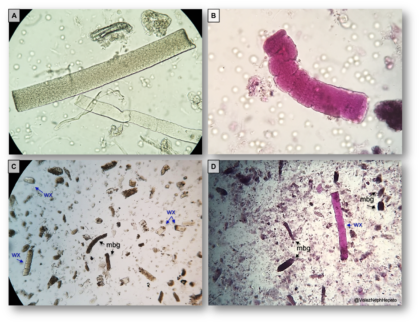Encapsulating Peritoneal Sclerosis (EPS) is an extremely rare, but devastating possible complication of peritoneal dialysis. The International Society of Peritoneal Dialysis (ISPD) defines it as a “syndrome continuously, intermittently, or repeatedly presenting with symptoms of intestinal obstruction caused by adhesions of a diffusely thickened peritoneum.”
One year mortality after diagnosis is as high as 57%. We review the clinical features and common therapies below. A 2017 position paper on length of time on dialysis and EPS is an incredibly useful read for all nephrology fellows.

Clinical Features
The clinical features of EPS are typically that of recurrent bowel obstruction. Patients present with nausea, vomiting, obstipation, and weight loss. There are two classically described stages, the inflammatory and fibrosing stages of EPS. In the inflammatory stage, one may not see the classic recurrent obstruction, but rather signs of inflammation with hypoalbuminemia, change in peritoneal membrane transport characteristics, or hemoperitoneum. There is a typical stepwise progression to the disease. Computed tomography scanning has been shown to be reliable for the diagnosis of EPS, but is not able to predict EPS. Classic findings include peritoneal calcification, abnormal bowel distribution, bowel wall thickening, bowel dilation, “cocooning” of the bowel, and peritoneal thickening (Fig 1).
Risk Factors
The primary risk factor for EPS is time on peritoneal dialysis. Notably, incident cases have occurred after discontinuation of dialysis, and even after transplantation. Higher dialysate glucose is known to be a risk factor and biocompatible dialysate may reduce the incidence and attenuate the course of EPS. Recurrent peritonitis is also a known risk factor
Therapies
Tamoxifen – As a selective estrogen receptor modulator that also acts as an anti-fibrotic agent, tamoxifen has been shown in retrospective evaluations to have a possible mortality benefit in EPS. This is yet to be confirmed in a prospective randomized trial.
Steroids – Steroids are commonly used as an adjunct to tamoxifen in the management of EPS. It is unclear if the potential benefits is from an anti-fibrotic effect, anti-inflammatory effect, or both. Evidence for steroids is limited, and mostly retrospective.
Stop PD – Some groups advocate for peritoneal rest an intermittent hemodialysis in all patients with EPS. There is a theoretical worsening of obstructive symptoms if PD is stopped, as adhesions may worsen. The decision to stop PD should be taken on a case by case basis.
TPN – Adjunctive TPN is commonly required in patients with EPS owing to frequent obstruction and inability to maintain caloric intake.
Surgery – Over time, literature has shown significant improvement in surgical outcomes likely owing to more advanced surgical techniques with 10% one year mortality after peritonectomy and enterolysis in one report. As the procedure is technically complex, referral to a surgeon/center well versed in the technique and in EPS is recommended.
Post by: Ankur Shah, MD
Nephrologist, Brown University


